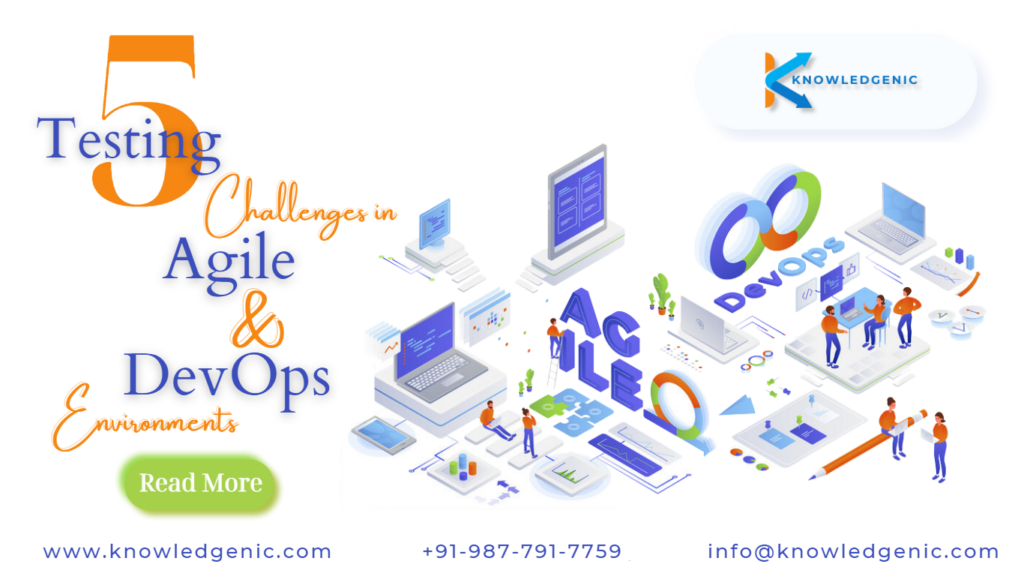Introduction
Agile and DevOps methodologies have revolutionized software development and delivery processes. However, they also bring unique challenges for software testing teams. This blog post will explore five common testing challenges faced in Agile and DevOps environments and discuss strategies to overcome them.
1. Accelerated Timeframes:
Agile and DevOps emphasize rapid and frequent releases, which can put immense pressure on testing teams. With shorter development cycles, testers often have limited time to plan, design, execute, and report test results. This challenge requires testing teams to adopt agile testing practices such as risk-based testing, test automation, and prioritization techniques to maximize test coverage within compressed timelines.
2. Continuous Testing Integration:
In a DevOps environment, testing needs to be seamlessly integrated into the continuous integration/continuous delivery (CI/CD) pipeline. Ensuring that test automation frameworks are robust, reliable, and capable of running efficiently as part of the CI/CD pipeline is crucial. Testers must work closely with developers and operations teams to establish a smooth handoff of testing artifacts and automate test execution at every stage of the pipeline.
3. Maintaining Test Environment Consistency:
In Agile and DevOps, multiple teams work concurrently, leading to complex and dynamic test environments. Ensuring consistency and stability of test environments becomes a significant challenge. Testers must collaborate with infrastructure and operations teams to establish standardized test environments and implement infrastructure-as-code (IaC) practices. This helps in automating the provisioning and configuration of test environments, ensuring consistency across development, testing, and production.
4. Test Data Management:
Obtaining and managing appropriate test data for comprehensive testing is critical. Agile and DevOps demand rapid iteration and deployment, making acquiring representative and diverse test data challenging. Testers must collaborate with business stakeholders and utilize techniques such as data masking, data generation, and synthetic data to create realistic test data sets. Additionally, implementing test data management tools and processes to ensure data privacy and compliance is essential.
5. Collaboration and Communication:
Agile and DevOps environments emphasize cross-functional collaboration and communication. However, achieving effective collaboration between testers, developers, product owners, and other stakeholders can be challenging due to different priorities, skill sets, and perspectives. To overcome this challenge, organizations should foster a culture of collaboration, encourage knowledge sharing, and leverage collaboration tools. Regular meetings, clear communication channels, and agile ceremonies such as daily stand-ups and retrospectives can facilitate better collaboration among teams.
Conclusion
Agile and DevOps bring agility, speed, and efficiency to software development but also introduce unique testing challenges. Testing teams can ensure high-quality software releases in Agile and DevOps environments by addressing challenges such as accelerated timeframes, continuous testing integration, test environment consistency, test data management, and collaboration. By embracing these challenges and adopting appropriate strategies, testers can align with the Agile and DevOps culture to deliver robust, reliable, and customer-centric software solutions.

